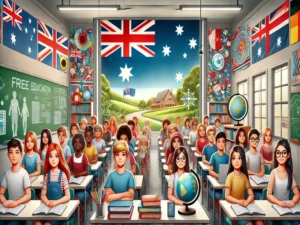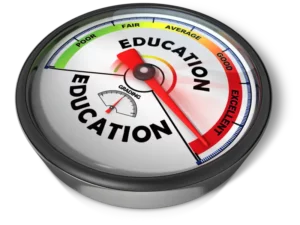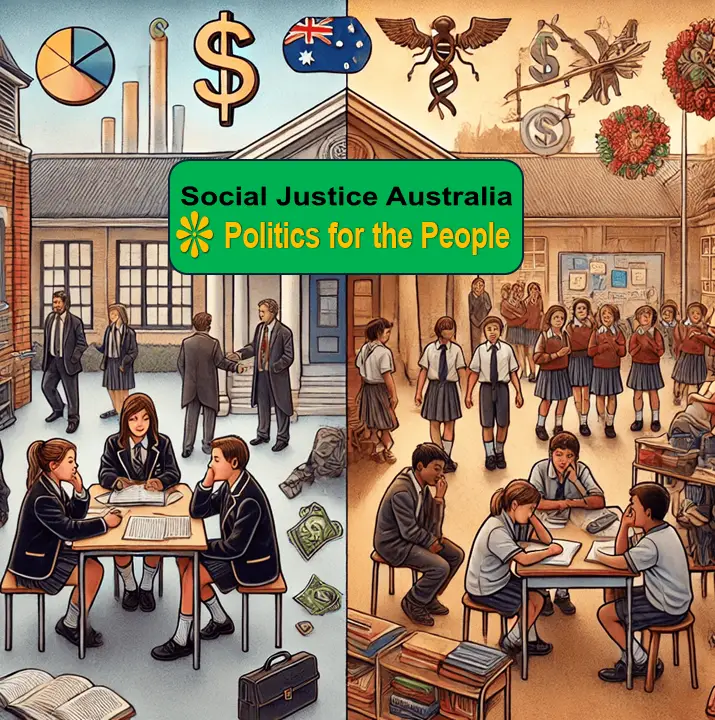The Silent Crisis: What’s Driving Families Away from Australia’s Public Schools
Description
Discover the hidden public education crisis. Learn why Australian families are choosing private schools and what reforms are urgently needed.
Introduction
Australia’s public education system is at a critical crossroads. Once a cornerstone of social mobility, public schools now face an alarming exodus, with many families opting for private institutions. This trend reflects more than a mere preference for prestige—it signals deep systemic failures that policymakers are reluctant to confront.
Public schools are burdened with addressing complex behavioural issues, often without the necessary resources. Violence in schools is rising, teaching positions stay unfilled, and vulnerable students are underserved. What can be done to save Australia’s public education system?
The Rise of Private School Enrolments
A Tale of Two Systems
1. Promises of Prestige: Private schools lure families with promises of smaller class sizes, academic excellence, and strict discipline.
2. Selective Inclusion: Many private institutions systematically choose which students to admit, shaping a polished but exclusionary image.
3. Resource Disparity: Public schools accept all students, regardless of background, but often lack the funding and support to meet their diverse needs.
Supporting Data:
• Enrolments in private secondary schools have risen by 25% over the past decade, while public school enrolments have stagnated.
• Reports show that independent schools spend twice as much per student compared to public schools.
Selective Inclusion: The Hidden Divide in Education
What Is Selective Inclusion?
Selective inclusion refers to the practice where private schools selectively choose which students to admit, often excluding those with special needs, behavioural challenges, or from disadvantaged backgrounds. Public schools, by contrast, are compelled to accept all students regardless of their circumstances, creating a stark divide in student demographics and educational outcomes.
How Selective Inclusion Manifests
1. Exclusion of Students with Disabilities:
o Private schools often cite a lack of “suitable facilities” or “specialised support” as reasons for exclusion.
o Public schools must accommodate these students despite lacking funding for necessary resources.
2. Behavioural Challenges:
o Private schools often exclude students who show disruptive behaviours, often linked to trauma.
o Public schools, however, must provide for these students without adequate therapeutic resources.
3. Socioeconomic Barriers:
o High tuition fees and associated costs create a financial barrier for low-income families.
o Scholarships often favour high-achieving students, excluding those needing added support.
4. Impact on Public Schools
Selective inclusion intensifies the challenges faced by public schools by creating an imbalance in student populations. Public schools become the primary educational institutions for students with higher support needs, often without proportionate funding to address these challenges.
1. Overcrowded Classrooms: Public schools must accommodate more students, increasing class sizes and decreasing individual support.
2. Strained Resources: Limited funding for school psychologists, social workers, and special education programs worsens existing challenges.
3. Teacher Burnout: M
anaging classrooms with diverse learning and behavioural needs increases teacher workload and leads to burnout.
Broader Social Impact
Selective inclusion perpetuates educational inequality, casting public schools as “problematic” institutions while private schools support a curated image of excellence. This divide weakens trust in public education and deepens social disparities.
Public Education Crisis: Breaking the Cycle
To address selective inclusion:
1. Policy Reforms: Enforce regulations to promote inclusivity in private schools.
2. Increased Funding: Ensure public schools receive fair resources to support all students.
3. Public Awareness: Challenge the narrative that private schools are superior by highlighting public schools’ resilience and successes.
Public School Struggles: The Harsh Realities
Public Education Crisis: A Crisis of Violence and Resource Deficiency
1. Rising Incidents of Violence:
o In 2023, NSW recorded 1,517 school assaults, up from 843 in 2022.
o Police were called to schools an average of 53 times daily.
2. Unfilled Teaching Positions:
o Over 3,000 permanent positions stay vacant in NSW, leading to overcrowded classrooms and insufficient supervision.
Impact on Staff and Students:
• Teachers face burnout due to unsafe conditions.
• Students in underfunded schools experience frequent disruptions that hinder academic progress and emotional wellbeing.
The Root Causes of Disruptive Behaviour
The Role of Childhood Trauma
1. Early Childhood Abuse:
o One in seven Australians experienced childhood abuse.
o Trauma-related behavioural issues surface in classroom settings, yet public schools lack adequate mental health support.
2. Neglect of Interventions:
o Evidence-based behavioural interventions exist but remain underfunded.
Systemic Stigma:
Children who misbehave are often labelled as problematic rather than recognised as victims of systemic failure, reinforcing their sense of exclusion and failure.
Public Schools as Safety Nets for Vulnerable Students
Disproportionate Burden on Low-Income Areas
1. Underfunded and Overburdened:
o Schools in low-income areas serve higher numbers of students with complex needs.
2. Inadequate Support Services:
o Shortages of school psychologists, social workers, and specialised teachers further worsen inequity.
Policy Failures:
Government policies often do not address resource gaps in public schools, perpetuating inequities.
Failed Government Responses
Superficial Solutions to Address the Public Education Crisis
1. Mobile Phone Bans:
o A measure aimed at reducing distractions but does not address deeper behavioural issues.
2. Workload Reviews:
o Reviews of principal workloads provide minimal relief and lack actionable follow-up.
Funding Promises Without Follow-Through:
The federal government’s pledge to fully fund public schools by 2026 is perceived as symbolic, given the persistent gaps in staffing and infrastructure.
The Need for Systemic Change
Public Schools as Inclusive Sanctuaries
1. Restorative Justice Practices:
o Implementing restorative practices can foster accountability and healing among students.
2. Specialised Support Staff:
o Hiring more psychologists, social workers, and behavioural specialists is essential.
Addressing Stigma:
Promote narratives that celebrate the achievements and resilience of public schools, challenging negative stereotypes.
The Moral and Social Imperative
The Role of Public Education in Democracy

1. Civic Responsibility: Public schools nurture critical thinking and informed citizenship.
2. Social Cohesion: Inclusive education unites diverse communities and strengthens social bonds.
International Lessons:
Countries like Finland, with strong public education systems, prove that investing in public schools leads to higher academic outcomes and civic engagement.
Solutions and Recommendations
Immediate Actions

1. Increased Funding: Allocate resources to reduce class sizes and hire support staff.
2. Mental Health Programs: Implement school-based mental health initiatives to address trauma-related behaviours.
Long-Term Goals
1. Equity-Driven Policies: Reform funding models to prioritise schools in disadvantaged areas.
2. Community Engagement: Build partnerships between schools, families, and local organisations to create supportive ecosystems.
Summary
Australia’s public education crisis is a crisis of neglect, exclusion, and underfunding. Selective inclusion by private schools shifts the burden onto public schools, straining their resources and reinforcing inequality. To ensure every child has access to quality education, bold reforms are needed, including increased funding, restorative practices, and a commitment to equity.
Q&A Section
1. Why are families choosing private schools over public schools?
Families often perceive private schools as offering superior academic outcomes and stricter discipline. However, this belief is influenced by exclusionary practices.
2. What challenges do public schools face?
Public schools struggle with rising violence, understaffing, and insufficient mental health support, as well as serving a disproportionate number of vulnerable students.
3. How can public schools be improved?
Investing in mental health initiatives, hiring specialised support staff, and implementing restorative justice practices can strengthen public education.
Call to Action
Do you see opportunities for community-driven change in Australia’s dollar sovereignty to address the public education crisis?
If you found this article insightful, explore more about political reform and Australia’s monetary sovereignty on Social Justice Australia: https://socialjusticeaustralia.com.au/
Share this article with your community to help drive the conversation toward a more just and equal society.
Click on our “Reader Feedback” menu. Let us know how our content has inspired you. Submit your testimonial and help shape the conversation today!
Additionally, leave a comment about this article below.
Support Our Mission
If you believe in holding corporations accountable and creating a more just society, consider supporting our work. Your donations help us continue producing in-depth, informative content and advocating for meaningful reforms. Every contribution, big or small, makes a difference.
Donate Here to help drive positive change.
Thank you for standing with us for a fairer, more equitable Australia.
Reference
The silent public education crisis killing Australia’s public education: https://www.thenewdaily.com.au/opinion/2025/01/12/public-education-crisis
Why public and private schools are partners in educating all Australian children: https://www.thenewdaily.com.au/opinion/2025/01/14/public-private-schools

